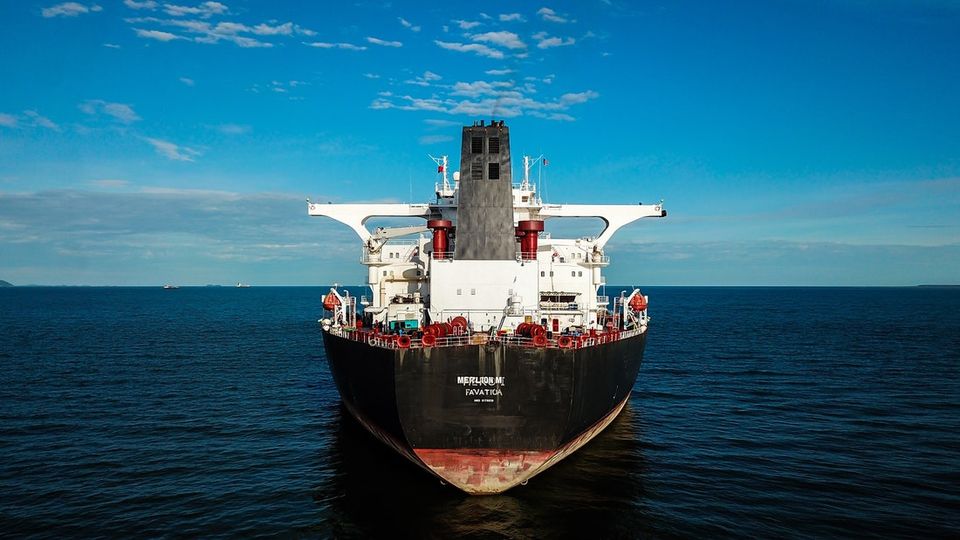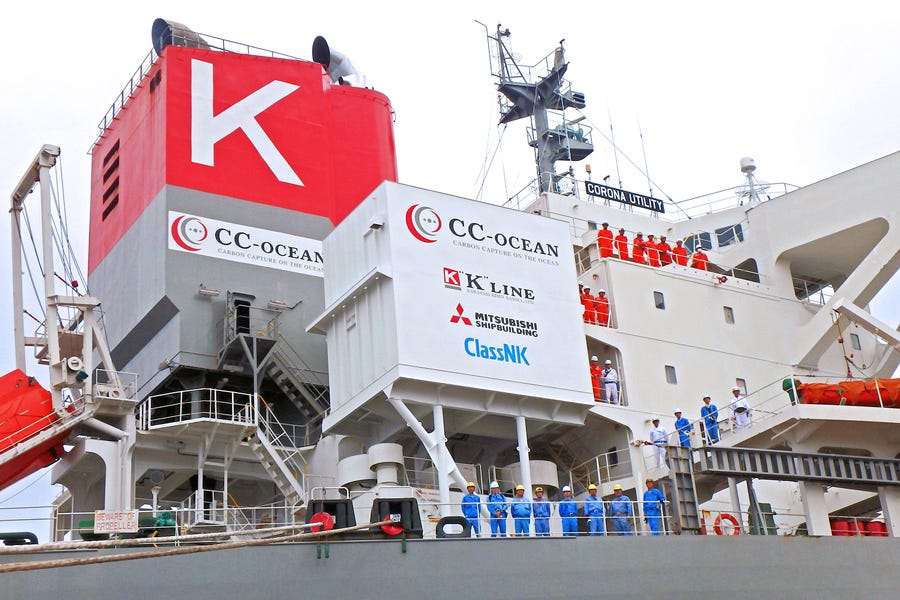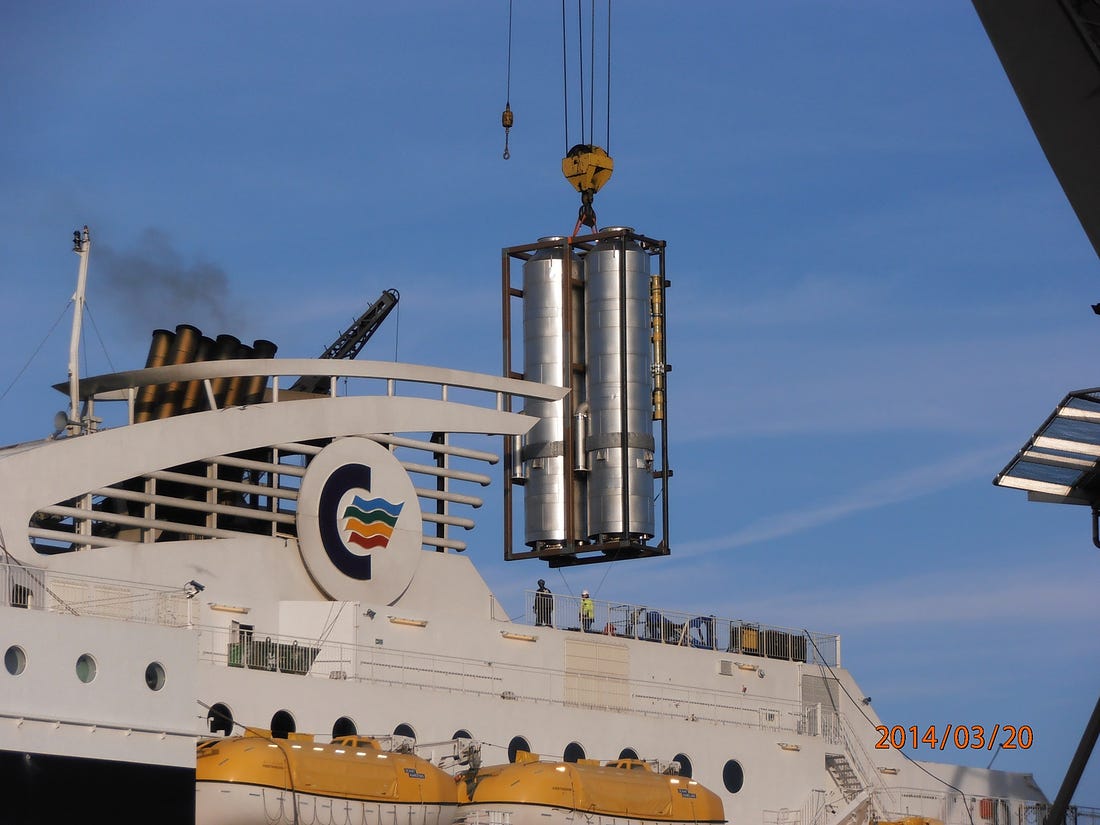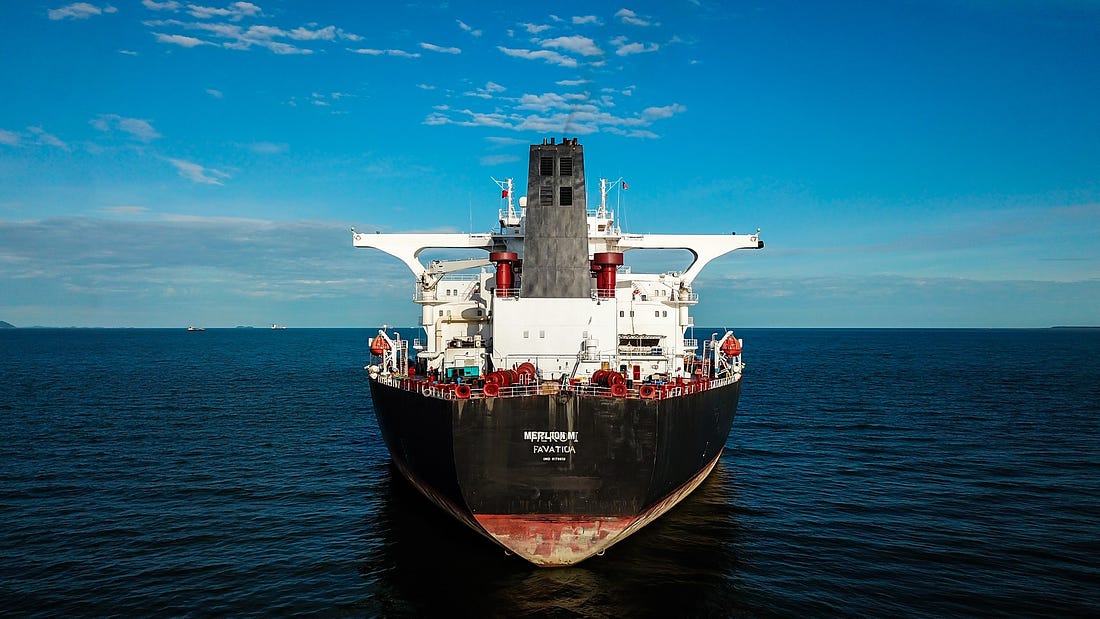Carbon Capture and the Shipping industry

The maritime shipping industry is one of the biggest emitters in the world with emissions that account for 2 to 3% of the global total. Just 15 container ships, like the one that was stuck in the Suez canal, match the emissions of all the cars in the world and if it was a country, it would have ranked 6th, between Japan and Germany.
These numbers are only going up, to 17% of total emissions by 2050 according to some scientists, as more of us are going to buy more products from more online shops around the world and, ironically, as we ship more infrastructure to decarbonize our world, like wind turbines and heavy batteries.
Naturally, there are plans to mitigate these emissions that range from policies to technical solutions:
🤝 Governments are collaborating with each other, like US joining Saudi Arabia as the only two countries to formally pledge to work toward the International Maritime Organization's (IMO) greenhouse gas strategy
💶 The EU is going to cap the shipping industry’s emissions and force them to pay for the excess via its already established cap-and-trade scheme
🏦 Banks are going to lend money to shipping companies only if they meet specific “green standards”
⚓Big shipping companies, like Maersk, are aiming to bring net-zero vessels running on synthetic zero-carbon fuel by 2023
💨 Last but not least, shipping companies are looking at carbon capture, placed onboard ships, in order to further decarbonize their fleets.
This last bit is what I’ll write about in this article. What “Carbon Capture on ship” means is that they are going to take those huge plants that capture CO2, scale them down, retrofit them on ship gas exhausts and compress the captured gas into a transferable form. Sounds easy, right?
While the technology is in its infancy, it seems that we’re not far ahead from commercialization with a dozen companies already undergoing some sort of experimentation.
Here are the most interesting stories from this race.
Mitsubishi

Mitsubishi started a verification testing of their carbon capture module on board of a coal carrier (so fitting) for the Tohoku Electric Power company.
The machine is aiming to capture 90% of the emissions and the test is going to last for a year. You can read more information in their press release.
Wartsila

Wartsila is a marine technology firm that builds, among other things, exhaust treatment modules so it’s only natural that they extend their capabilities to carbon capture.
They’re aiming to capture 70% of the exhaust gases and plan to go operational on 2023. If you’re curious to see what kind of ships these companies are testing their units on, we have more details about this one which is an LPG (Liquid Petroleum Gas) Tanker - look here.
Teco 2030

Teco 2030 are another company that is creating maritime tech and these folks seem to be very interested in renewable energy and, specifically, hydrogen in ships.
The interesting thing with their solution is that they are using a revolutionary way of capturing carbon dioxide which is different from all the ways we have encountered so far (absorption in a liquid solvent with heavy chemicals and adsorption in a solid sorbent via its physical properties) and it’s called Cryogenic Carbon Capture. As the name suggests, the air is frozen and the CO2 is separated from the rest of the gases - you can read more in the relevant paper and I promise I’ll create another post about that in the future.
DeltaMarin

DeltaMarin are a company who make ships, among others, and they recently participated in a with joint study with Total, Minerva and DNV. They opted out to test on RoPax ships because they operate on fixed routes where the captured CO2 can be frequently discharged to shore and less volume is needed for onboard storage. Many of the ferry operators have also selected LNG (Liquified Natural Gas) as their fuel. LNG has some inherent benefits for use with an absorption-based carbon capture system as it offers clean exhaust gases, and the engine fuel supply can be used as a heat sink for liquefaction of the captured CO2.
They tested different variations of the ship with varying fuel consumption models (from heavy fuel oil to the cleaner LNG) and the main conclusion was that, depending on the intensity of fuel burning (which is then dependent on the frequency and speed on the route) and the level of CO2 tax, the payback period ranged from 5 to 10 years. Considering that most ships have a lifecycle of 25-30 years, this already seems like a viable path!
Make sure to read the company’s press release to get a deeper look at the numbers.
These are the ways shipping companies aim to capture their ships’ emitted carbon dioxide. Someone might of course ask why should we capture them. Teco 2030’s CEO, Stian Aakre, seems to give the best answer (emphasis mine):
When we look at the fuel consumption predictions for the maritime industry towards 2050, we see that onboard carbon capture will also likely be needed. This is because not enough of the existing vessels will be either rebuilt to utilise more climate-friendly fuels or be replaced by lower emission ships before the drafted deadlines
If you have any questions about the ways that big shipping companies are aiming to reduce their emissions or need some help finding some numbers, make sure to leave me a comment below!


